Pain Points in Business – Collecting Reviews


Getting customer reviews regularly and adding them to relevant spots on your website can prove to be a more complex task than you’d initially think.
I interviewed people across different industries and around the world to understand their issues.
In addition to going over the most common pain points related to reviews, I’ll offer my two cents on how to solve the issue.
This article focuses on pain points in getting new reviews, and I've written a separate piece on pain points in showing reviews.
Research Method and Data
I used the help a B2B writer forum, LinkedIn, and personal network to find interviewees.
Here’s a little breakdown of the important bits before I can start introducing what they struggle with.
Platforms Mentioned
- Trustmary
- Delighted
- Clutch
- Postscript (SMS marketing and sales for Shopify brands)
- Glew.io
- Yotpo
- Customer Reviews Plugin
- JudgeMe
- Shopify
- Trustpilot
- Klaviyo
- ReviewTrackers
- Reevoo
- EmbedSocial
- ReviewPush
- Podium
- Trustindex
- WordPress
These were either review platforms used currently or tried, but abandoned due to issues. As some of the comments mentioned tools people had difficulties with, I thought it's fair to omit the tool name. I did the same to both positive and negative mentions.
People also mentioned platforms that they use for either requesting reviews, or automating that process, as well as the CMS their website is built on.
Review Request Methods
- Email surveys
- SMS surveys
- In-app popup surveys
- Face to face
- Automation
People and Companies Involved
I've tagged everyone's LinkedIn profile and company when they first appear in the text.
Thanks a million everyone for sharing your thoughts!
Timing of Review Requests
Knowing when to ask for B2B feedback or review can be tricky. If you ask too soon, the customer might not be ready to review you. If you ask too late, you risk missing capturing them at their happiest moments with you.
It boils down to the peak-end rule:
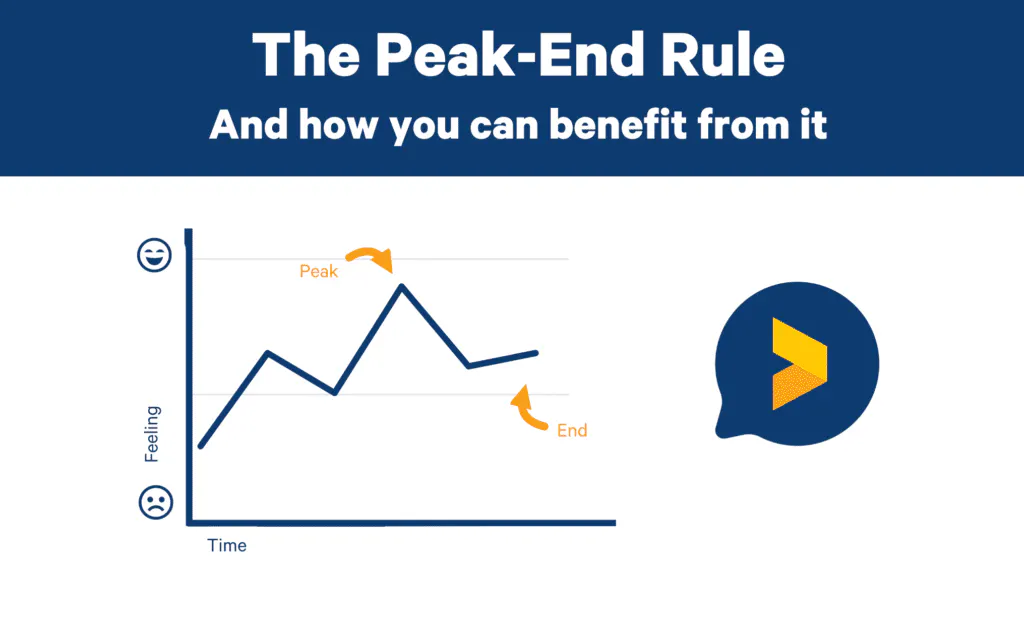
– If we hastily inquire about a review, the user might not have experienced the app yet. However, if we hold off too long, they could lose interest. Pinning down that pleasant spot is more complex than it may seem, summarizes Simon Lee, the CEO at Glance.
Similarly to Lee, Cache Merrill, the Founder and CTO at Zibtek struggles with having to consistently put effort into getting reviews as well as the following-up process in general:
– We feel there's an appropriate time wherever the customer has had enough experience with us. If we ask them too soon, they're like, “I'm not going to give a review. I don't know you yet.” Our actual cycle is kind of long, too, Merrill says.
Merrill feels review requests are too transactional, and this doesn’t fit the nature of their industry. His company has looked into review tools, but using one might come across as too pushy for some clients.
Merrill thinks it all boils down to constantly evaluating the customer relationship. All this knowledge is in the hands of the contact person, which creates issues with automating requests.
– In our case, a project might take six or nine months to complete. Some customers feel comfortable reviewing us after a two week iteration, when we're only at the beginning of the project. Others want to see the project delivered before reviewing. Timing is actually very, very tricky, Merrill describes.
With reviews, one approach does not fit all. A badly timed review request might even harm the overall customer experience.
How to Get Spontaneous Reviews
One great way to make sure never to miss another review is to make it an integral part of your operations to ask for customer feedback.
Asking for feedback and reviews makes a customer feel valued and heard.
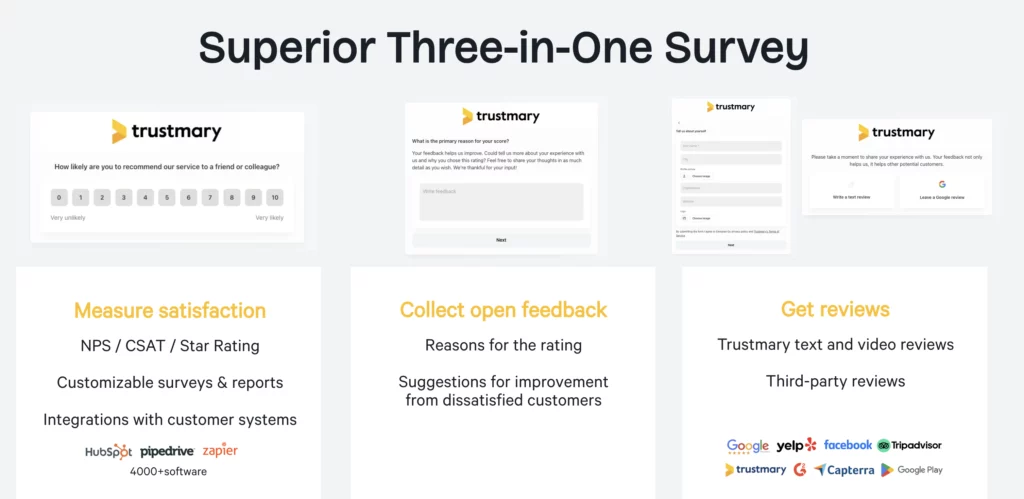
Trustmary Method lets you ask for feedback, and then ask if they would like to leave it as a review or not. Simple!
Whenever I spontaneously get nice feedback from a client, I follow them up with a review link that’s pinned on our Slack channel.
Just by knowing where I can find a review link in a second has been a key in getting those invaluable comments as reviews on our website.
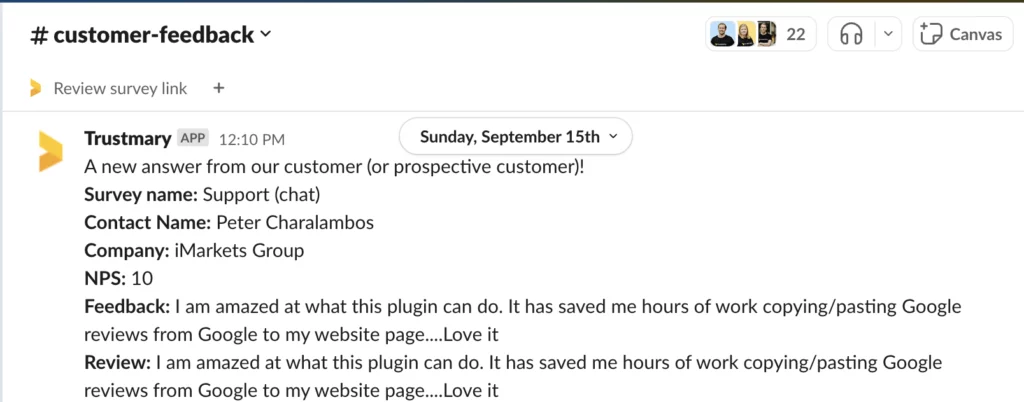
Few Methods for Reviews:
- Automated emails after a sales meeting
- Automated emails after an onboarding
- Everyone has quick access to a review link for spontaneous comments
- Link added to email signature
- Review link provided after each help chat interaction
ROI on Reviews
When you’re not sure something will move the needle, it’s very likely that this will be in the nice-to-have basket.
I’m guilty of this as well, as our marketing team consists of two full-time people, interim CMO and agency doing paid ads.
Lucas Carval is a Growth Marketer at a SaaS company Mention and struggles with the same issues:
– My main responsibility is to increase the number of free trial and demo requests on our software. To do this, I'm managing the SEO part of the website, organizing the content to rank on new keywords that would lead us to more qualified visits, Carval lists his responsibilities.
In addition, he’s in charge of analytics, CRO, and review collection. As that’s a lot for one person to handle, Carval says that all his activities are geared towards getting more signups.
– It's a bit difficult to quantify what would be the benefit of having more reviews in terms of ROI. If we get 20 more reviews, it might lead to a better brand perception, but how can that be measured, Carval continues.
Currently, Mention focuses on getting Capterra and G2 reviews, because they're a prominently used platform in the software industry. There are also issues with getting those reviews, but more about them later.
Interestingly, reviews can also be viewed as a very cost-effective way to boost marketing on all fronts.
Reviews Can Be Used as:
- Ad copy
- Social media posts
- Newsletter material
- Sales presentation materials
- Review schema on search engines
- Supplementary landing page copy
- Review page or references page featuring all reviews
– Reviews have so many angles and they are so cost effective to create if you put a little bit of effort behind it. So many things in marketing these days are expensive: You have to run ad campaigns and put money in and all that stuff. Reviews barely cost anything, says Tim Steckel, CEO at Compost Marketing Agency.
ROI for Reviews in B2C
ROI is more straightforward to measure in B2C than B2B, as it can have a direct influence on the purchases made. In B2B, the sales cycles tend to be more complex and longer.
– Customer trust and conversion rates have definitely gone up because of customer reviews. Since installing the review widget, we’ve seen our online sales increase by an average of 10% annually, so social proof works wonders, Sam Speller, CEO at Kenko Tea
We’ve noticed similar results with our customers:
- 38,52% increase in purchase journey
- 60% more contact requests
- 37% more sales with video reviews
- 14% increase in conversions with longer reviews
- Month-on-month growth in sales
Price of Platform
Online review management tools are often priced per usage. When a business starts to get reviews, the price may increase significantly.
– As our volume of reviews has grown, so have the fees, and it starts to feel like a bit of a squeeze for a small business like ours, says Chris Bajda, the CEO of Groomsday.
Other people also mentioned the cost associated with advanced features as a pain point.
Sounding Spammy
When asking for reviews, companies try to avoid sounding too pushy or spammy.
– Sometimes customers can find automated messages a bit intrusive, causing reluctance in leaving a review. An ongoing conundrum is extracting authentic details from the customers about their dining experience, without vexing them with prompts, Andrea Abbondanza, CEO at SEO for Restaurants.
Personalized approach and using multiple methods to collect reviews are popular tactics, but they can also feel spammy.
– We primarily use SMS-based requests via a platform. It’s been pretty effective, especially since people tend to respond faster to texts. However, the challenge is making sure our messages don’t come across as spammy, which takes a bit of finesse with wording and timing. Getting that balance right can be tricky, Chris Bajda from Groomsday explains.
Try Changing the Message
Tim Steckel has a unique approach to tackle the issues of sounding pushy or spammy:
– I always try to tie to whole message to the higher cause of the business in question. Essentially, I would say something like, “Could you leave us a review so other people can find us? That way, we can make more compost, so more stuff gets diverted from the landfill.”, Steckel describes.
Essentially, Steckel encourages companies to shift the focus from “please review us” to focusing on the mission behind the company.
A sustainable clothing brand could try something in the lines of: Help others make more informed decisions by reviewing us in as much detail as possible. Let’s reduce returns and the impact it has on the environment together.
Try to tie the review request directly to what is the benefit of your company succeeding in the bigger picture.
Velocity of Reviews
If you haven’t automated your review process, but rely on manual actions, you’re probably not getting in reviews consistently.
This can set you back big time. Especially local businesses that depend on showing up high on search engines must get reviewed constantly. It has a huge impact on Google My Business SEO efforts. However, your customers need to have a Google account to leave you Google reviews. It's advisable to focus on first-party reviews as well as third-party reviews.
To beat your competition, getting reviews might just be the things that sets you apart from them.
Compounding Effect
Tim Steckel has worked with numerous local businesses and always underlines one thing:
– If you get one review a week, that’s 52 reviews in a year. Just by making sure you reach that volume you’re making sure you stay relevant in local searches, Steckel describes.
This applies to small and big businesses: If you start collecting reviews a month from now, you’re already falling behind. Consistency is a key factor here.
It’s better for your credibility to get one review a week than 52 at once. Getting too many reviews on the same day might be interpreted as you buying reviews.
Long Review Process
Some review platforms take up a lot of work from the reviewer. This significantly increases the threshold of you daring to ask customers to leave reviews on them.
No one wants to bother their clients.
Requirements to leave a G2/Capterra Review
- An account
- 5-15 minutes of time
- Experience with the product
Similarly to G2 and Capterra, the Clutch review process is lengthy.
– We would ideally like customers to review us on Clutch, but doing so takes up 20 minutes. We need to consider very thoroughly when and if we can ask customers to do that, Cache Merrill says.
Using Incentives
Many review sites have strict rules on not buying positive reviews. The Federal Trade Commission introduced a ban on fake reviews, which is aimed to protect consumers by making using fake reviews illegal.
There is a right and acceptable way of using incentives to get reviews:
Offer the same compensation for everyone taking the time to submit a review.
I’ve gotten so many “Please review us on Capterra for a $20 gift card”.
Here’s an example of such a message. This is a nice message, but according to the new rules, the wording “good word” should be changed to something neutral.
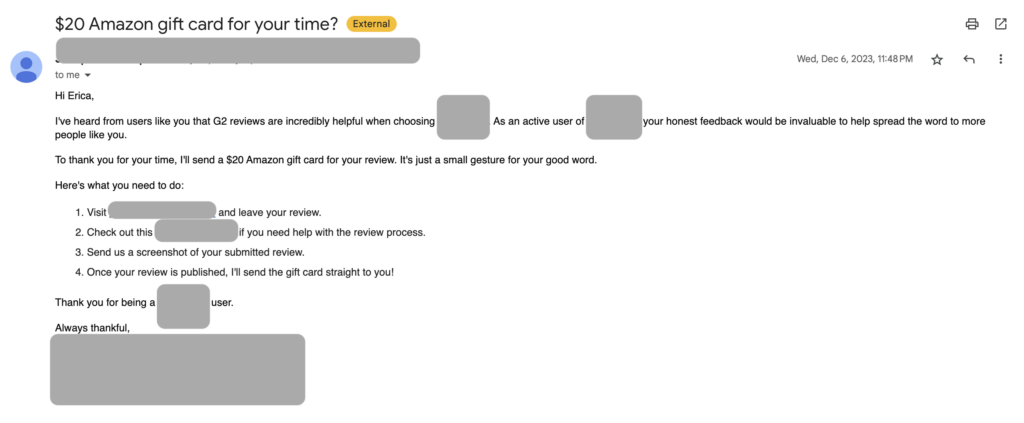
This is a very common tactic to get reviews and feedback across industries, but everyone is somewhat concerned about not bribing.
– We leverage our CRM to send automated follow-up emails post-onboarding. The challenge here is maintaining a high response rate without seeming pushy. We've found that offering a small incentive, through a reward scheme has helped our review numbers, Joshua Webb, Head of Growth at Kinnovis.
– The pain point is ensuring that the incentives don’t come across as bribery, so we’ve refined our messaging to highlight that reviews should be honest and reflect their true experience, Vaibhav Kakkar, CEO at DWS.
Using Raffles to Get Responses
Another popular tactic is using raffles to get responses. The annoying thing about this is that there might be some that only click the “can’t say” option, which causes bias in the survey results.
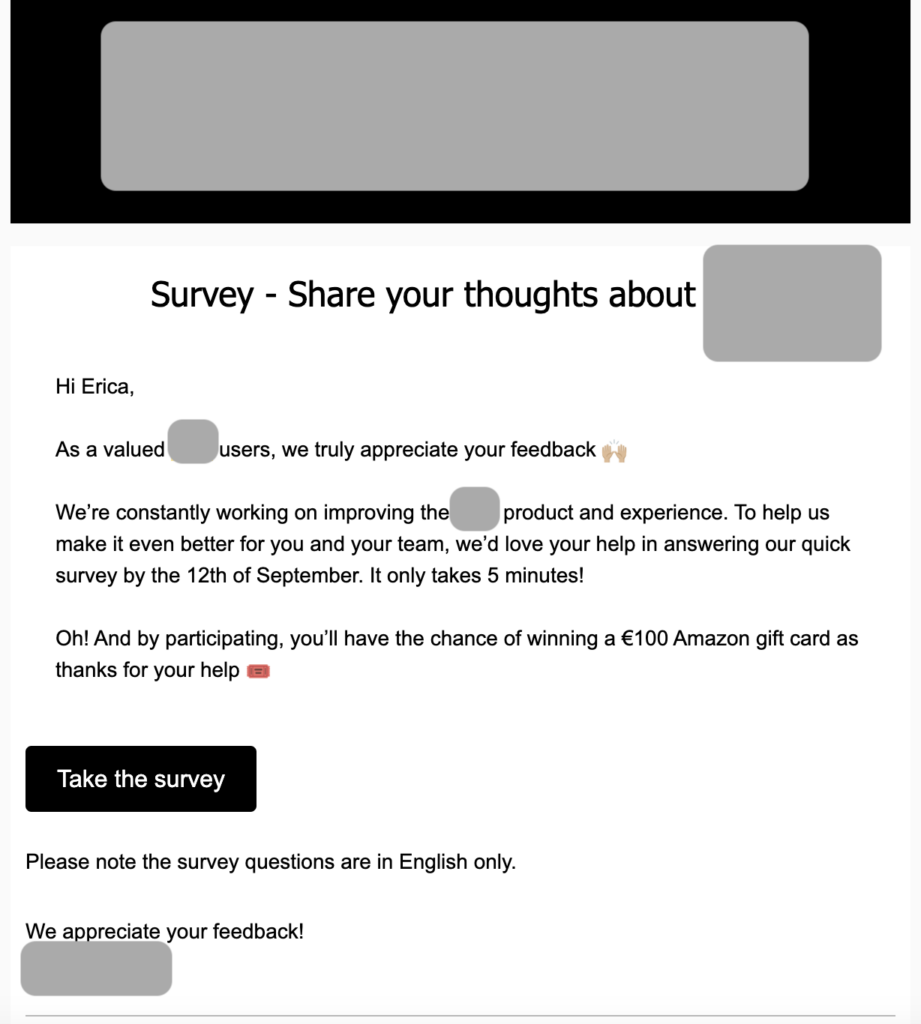
If someone is just after the prize, they’re not that interested in filling out the survey.
Analyzing Reviews
When you finally have reviews, it was reported that drawing conclusions and acting on it is not always easy.
– Navigating the dashboard can be a bit cumbersome—sometimes it feels like I’m clicking around in circles just to find a simple report or adjust settings, described Bajda from Groomsday.
Brooke Webber is a Head of Marketing at Ninja Patches and struggles with similar issues.
– There are limited reporting features available, which makes it difficult to extract detailed insights. Occasional data sync issues can also create inconsistencies, requiring manual adjustment, Webber describes.
Simon Lee would like to be able to filter reviews and feedback based on keywords.
– We wish the platform to prioritize specific critiques based on keywords, yet it struggles with that, Simon Lee from Glance comments.
Identifying and reacting to negative reviews in a timely manner was one of the core issues mentioned.
Feedback Remains Private
Carval says that Mention currently collects NPS from its users with an in-app popup survey. The company has a great NPS and gets a ton of nice open feedback.
If someone gives them NPS, Mention has automated a review request to G2 and Capterra.
– When we compare the number of NPS feedback we have with the number of people who leave a review on G2 and Capterra. There's quite a big difference in numbers, Carval says.
This is one core issue all companies have. You might get great feedback face to face, or via email even, but you can't use that in marketing in any way.
The only way to do that is to ask for a review.
No Ownership on Review Collection
If you don’t have a dedicated customer experience person at your company, it’s highly likely that your feedback and review processes involve many people.
That also translates to no one taking ownership of consistently getting reviews.
Cache Merrill struggles with this as the founder of the company. He’s not the primary point of contact to customers, but sees the importance of getting reviews.
– The project manager tends to ask for those reviews. They're the ones who know when it's appropriate to ask for a review. From the owner's perspective, the problem is that they don't remember to do that at all. It's just not on their minds, Merrill says.
As their business requires timing the reviews request right, bulk sending emails to all customers is not an option. Merrill is left with having to remind his employees.
– I'm constantly like, “Hey, did you send the review request out? Did you ask for a review in your meeting? Did you do that?”. It’s not an ideal solution. Additionally, we also struggle juggling between which review to ask for and when: A Clutch review takes 20 minutes, but a Google review only takes seconds, Merrill adds.
Tim Steckel underlines that asking for reviews should be everyone’s responsibility within a company.
– If you have a brick and mortar store, people at the cash register should be made aware of the importance to ask for reviews, Steckel says.
For online businesses, this isn’t as easily said, but one should focus on adding review requests to different touch points in the customer journey.
Juggling Review Platforms
As there are dozens of general review sites as well as niche review sites including:
- SaaS review sites
- Service provide review sites
- Lawyer review sites
- B2B review sites
- Travel review sites
- Hotel review sites
And so many more niche-relevant review sites, managing all of them is a common pain point.
– One crucial pain point is juggling reviews from different platforms. Managing reviews from Google, Trustpilot, and other sources can be a bit of a headache, especially when you’re trying to respond quickly and keep everything organized, says Peter Lewis, Head of Growth at Webstreet.
Similarly to Lewis, Joshua Webb is concerned about making sure they respond to reviews.
– The main pain point is the manual effort required to respond to each review promptly. However, the SEO benefits and increased credibility make it worthwhile, Joshua Webb from Kinnovis.
Hanna Feltges is Growth Marketer at Niceboard, which is a SaaS company that enables companies and organizations to create and manage job boards. Niceboard currently gets all its reviews organically.
– Ideally, I think it would be great to get reviews on our own platform and own them. As we're in a B2B market and the software market, these third party review platforms are very important for the overall decision making process. They're usually one of the first places people go to at the beginning of their purchasing journey, Feltges explains.
Visibility across Review Platforms
I’d love everyone to see all of our reviews.
However, we currently have:
- 44 reviews on Capterra
- 11 G2 reviews
- 2 Facebook reviews
- 73 Google reviews
- 2727 Trustmary reviews
We have a review page that features all of our reviews, and it’s nice because it gets updated automatically as new reviews are given.
BUT: If someone looks us up on Capterra, they only see 44 reviews.
This is a general issue across all industries.
– We have multiple platforms, which is kind of one problem. We have Clutch, Google and a bunch of different platforms, Apart from that, the visibility of these reviews isn’t always consistent across different platforms, which can create discrepancies in how potential clients perceive our reputation, Cache Merrill explains.
Having multiple platforms also means you need to focus on one or maximum two at a time.
– Mainly using third-party software review platforms to collect reviews which has the downside of being restrictive in the number of reviews we can receive. Furthermore, our visibility on them partly depends on using pay per click ads for certain keywords people use to find our software, Hanna Feltges continues.
As there are so many review platforms to learn, the learning curve of learning different review sites and systems was mentioned.
Video Reviews and Case Studies
Video testimonials convert like crazy, but are hard to collect. Or can be, depending on your industry and budget.
We’ve seen cases where video reviews have increased sales by 20%, but especially for B2B they require a hefty budget and a lot of human resources.
– One thing that’s worked really well for us is video reviews. Of course, getting clients to leave reviews or participate in case studies can still be a challenge, especially with their busy schedules, says Albert Kim VP of Talent at Checkr.
Aleksi Halsas is the Co-founder and CEO at Clevenio, and their resources as an early-stage startup are very limited. At the same time, they need social proof from happy customers to boost sales and marketing.
– If you collect reviews and testimonials via email, you need to double check whether you can use a comment or not, Halsas says.
He has created an agile way to create case stories.
– Whenever I get a nice comment from a client via email or publicly, I use that and everything I know about how we helped them and craft a simple case story. I then send it to the customer for their approval. Quick and easy for the client to approve, Halsas explains.
Case studies and video reviews are more relatable for the potential client.
– Case studies give us the opportunity to really dive deep into a client’s journey with us, showing potential customers how our solutions work in the real world. They also give us insights and important data that shows readers the huge impact of our partnership with them, Albert Kim continues.
Creating a Process for In-depth Stories
Typically, the process for getting more in-depth stories goes like this:
- Measure customer satisfaction (NPS or CSAT)
- Ask for open feedback
- Thank personally for feedback
- Ask for a review on a third-party site
- Thank and ask if they'd be willing to do a case study interview or video review
– The biggest challenge with video reviews is the coordination and resources involved. You need to find the right time for the client, arrange a video team, and conduct the interviews. It’s also important to capture workplace footage if possible, like showing employees in action, whether at their hotel or retail location. This adds authenticity but requires more planning, Albert Kim.
Even though case studies and video reviews are considered versatile and impactful, getting them is perceived as so laboursome that only a few actively collect them.
Ideal Flow to Collect Reviews
Don't we all wish our customers would organically recommend us to their friends and write us raving reviews on all platforms?
For most companies, that's just not the case and getting reviews organically is hard.
Even though customers might be super happy with the level of service, there might be other issues hindering them from reviewing you:
- Customer needs to look for your review form
- Customer feedback is received via email, so it remains there
- Technical limitations – some might not be able to submit a review if your form is too tricky
- Wanting to provide anonymous reviews, but the review platform doesn't allow it (specialist doctors and psychologists know this pain!)
- No account to the review platform (see image below)
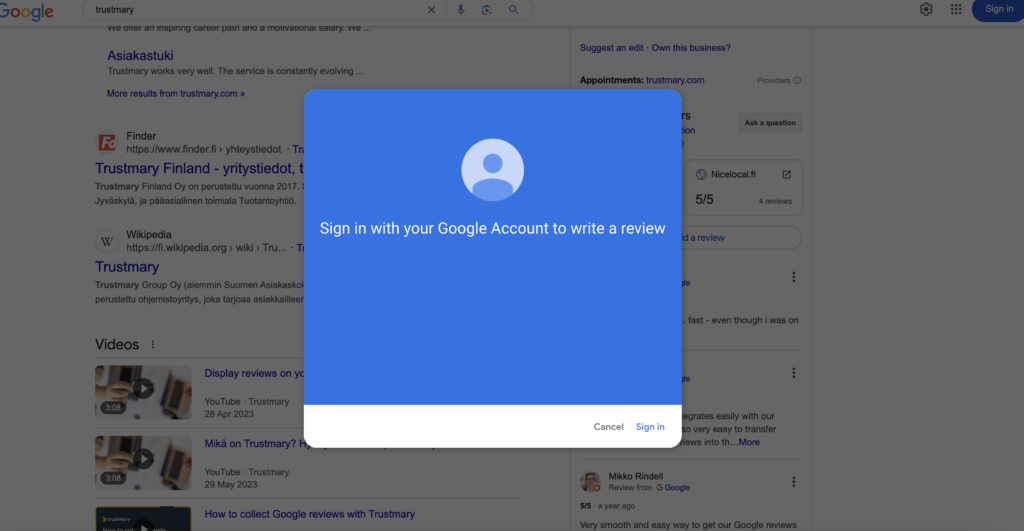
If you don't know where to start with collecting reviews, let's do that together!